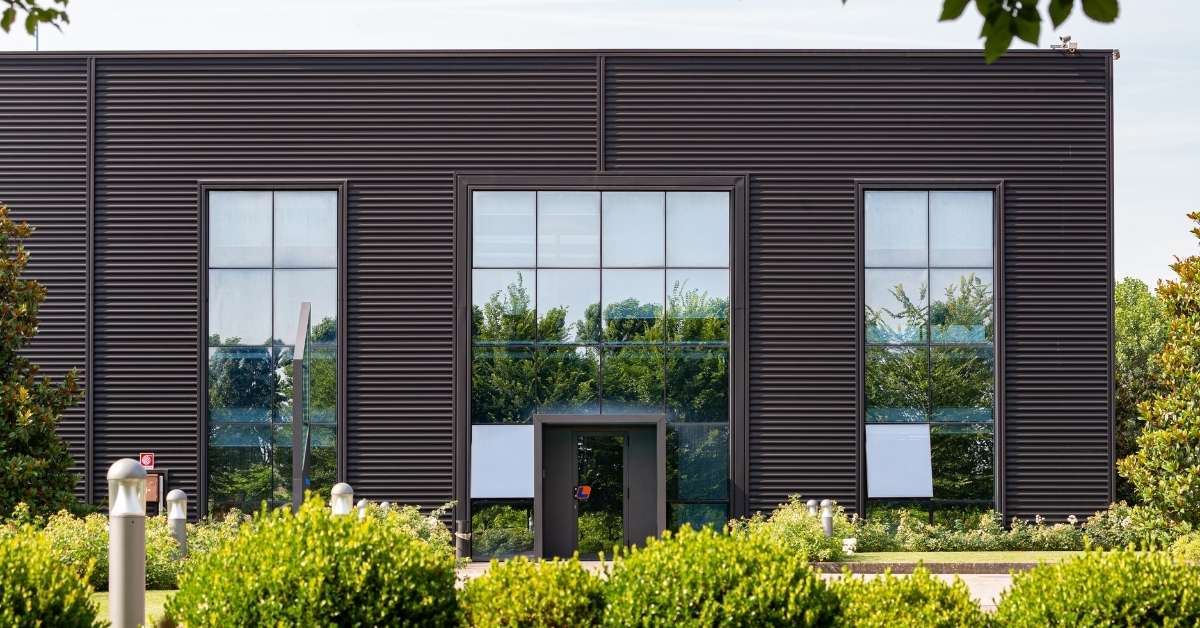The FM Approved mark is a voluntary international certification issued by the American FM Approvals. More and more companies are deciding to acquire this certification to align themselves with a larger, international market in which it is widely recognised and appreciated.
In order to understand how the FM Approved certification process works, it is good to explain how it originates, what it includes and what steps are required to obtain this marking.
The official start of the Factory Mutual Laboratories, today known as FM Approvals, dates back to 1886 when John R. Freeman began his fundamental experimentation and testing of fire-fighting devices, making the laboratories first in the world in these tests.
In fact, the FM fire certification was the first issued by the organisation.
Since then, there have been many laboratory tests and verifications that have led to the identification of functional standards to prevent the loss of material properties and to certify their building safety and reliability.
Today, the FM (Factory Mutual) Approved mark is issued by the FM Approvals certification laboratory which, together with FM Global, is part of the FM Insurance Company.
FM Global is an international mutual insurance company specialising in risk management and loss prevention services for large companies. FM approval requires some of the most stringent testing requirements that must be fully met in order to be assured:
- quality
- technical integrity
- performance
Examples of the application of the FM Approved mark: sandwich panels
FM Approvals is therefore recognised as an international reference in product testing and material property loss prevention for use in commercial and industrial facilities.
Some examples of products evaluated by FM testing are:
- Flame detection,
- Foam fire protection,
- Insulating panels,
- Claddings,
- Wall and ceiling materials, etc
In this regard, it is worth mentioning that Isopan, a company of the Manni Group, also obtained FM Approvals certification for its sandwich panels with PIR insulation, following the one already obtained for rock wool.
The achievement of the FM Approved mark certifies its performance against the effects caused by natural disasters.
The entire enclosure is thus insured for effective protection for both building owners and users in the event of:
- fire propagation
- external risk agents: hail and wind.
FM-approved insulation boards are tested for reaction to fire as well as their ability to cope with natural hazard events without compromising the building structure.
In more detail, the FM Approved marked Isopan insulation boards are:
- Class 1 roofing panels: FM 4471 Approval Standard
The standard governs the testing of resistance to hail, wind load, and combustibility.
- Class 1 panels for inside walls: FM 4880 Approval Standard
The standard certifies the reaction to fire of the system, ensuring maximum protection of the building.
- Exterior wall panels: FM 4881 Approval Standard
The panels for outside walls have been tested to guarantee the performance of their intended functions, maintaining the building enclosure integrity as per the stated design conditions.
What are the steps to obtain the FM Approved label?
The FM standard employs a strict and thorough global certification process, backed by scientific research and testing and over a century of experience. To obtain this certification, steps must be followed, detailed below.
Step 1: Manufacturer's request
The manufacturer submits a request for approval for one or more products specifying the scope and the relevant documentation.
Step 2: Issuing the Proposal and Producer Authorisation
FM Approvals sends a proposal to the manufacturer with the contract (Master Agreement), the programme, the tests to be performed and the samples required for testing. These are produced in the presence of an FM official who checks not only the raw materials but also the production parameters.
Step 3: Review, testing and first audit
If FM Approvals receives all the necessary elements, the test is scheduled and conducted. This is followed by a visit to the manufacturer's facility for an internal quality management check before approval.
Step 4: Report, FM Approved mark and listing
Once the process has been successfully completed, a report is prepared and reviewed for technical accuracy. Samples are stored and archived (if necessary returned to the customer or disposed of according to instructions). The approval runs from the date of the report sent to the manufacturer who can then label the product as FM Approved.
The product is listed in the Approval Guide, available online.
Step 5: Surveillance audits
Once approval has been obtained, manufacturers must pass annual inspections by FM Approval. The audit process helps to ensure that FM Approved products continue to meet all requirements. In addition, surveillance of production facilities is necessary to maintain FM approval status. By objectively testing products and certifying that they meet stringent property loss prevention standards, customers can be completely assured of preventive protection against natural forces and fire.
The meaning of FM Approved is also this: to make the quality, reliability and safety of the products concerned immediately visible.


